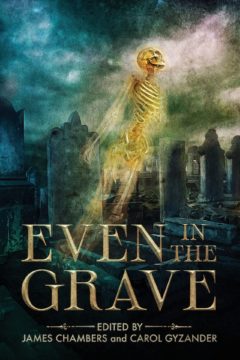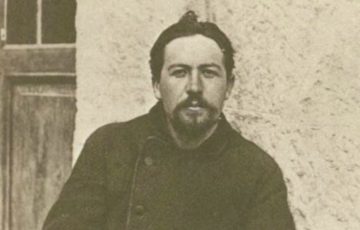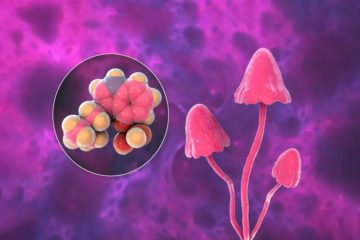Dwight Garner in The New York Times:
 It used to be that, when you died, what you wanted was an obituary in a good newspaper, not that you’d be around to savor it. Since the introduction of the smartphone, the stakes have been raised. “I got a breaking news alert when I croaked,” some overachiever has surely bragged in the great beyond. “How about you?”
It used to be that, when you died, what you wanted was an obituary in a good newspaper, not that you’d be around to savor it. Since the introduction of the smartphone, the stakes have been raised. “I got a breaking news alert when I croaked,” some overachiever has surely bragged in the great beyond. “How about you?”
Obituaries in newspapers like this one have loosened up in the past few decades. Résumé virtues, like being the inventor of Velcro, still matter most, but eulogy virtues, like being able to mimic an old school bus starting up, are increasingly sneaking in as well. One newspaper led this shift in tone: The Daily Telegraph in London. It was The Telegraph’s inspiration, beginning in the 1980s, to treat obituaries as an essentially comic form. The paper’s cheeky, truth-dealing obits have inspired a cult readership. The books that collect them, with titles devoted to “Rogues,” “Heroes and Adventurers,” “Naval Obituaries,” “Sports” and so on, are oddly uplifting, better than edibles, to tuck into before bed.
The latest Telegraph collection is titled “Eccentric Lives.” It’s a book about oddballs and joy-hogs and the especially drunken and/or irascible, and it may be the best yet. The English journalist Jessica Mitford, in her letters, said that the slogan for her funeral would be “brevity followed by levity.” The Telegraph seems to abide by similar rules.
More here.

 Gilliam’s story is the all-too-familiar one of a Black artist only receiving critical acclaim and attention much later in his career. Although many were aware of his genius well before he came into the limelight, he simply was not given his due as one of the best abstractionists of his generation. I fell in love with his work early on, like many of us, through research and books. His drapery paintings – massive sculptural canvases, stained with whisps of colour and hung in various clumps sans stretcher – singlehandedly revitalized my passion for the medium. He was an expert colourist and a brilliant manipulator of materials. In so many ways, he taught me through his work what it meant to be a true master painter. Recently, I was lucky enough to see two great, posthumous shows of Gilliam’s work: ‘White and Black Paintings: 1975–77’ at David Kordansky in Los Angeles and ‘Late Paintings’ at Pace London. These two exhibitions served as effective bookends to Gilliam’s illustrious career. Many of the works in both shows looked simultaneously contemporary and historical: in the 1960s and ’70s, he experimented with bevelling his canvases, a technique he would return to much later.
Gilliam’s story is the all-too-familiar one of a Black artist only receiving critical acclaim and attention much later in his career. Although many were aware of his genius well before he came into the limelight, he simply was not given his due as one of the best abstractionists of his generation. I fell in love with his work early on, like many of us, through research and books. His drapery paintings – massive sculptural canvases, stained with whisps of colour and hung in various clumps sans stretcher – singlehandedly revitalized my passion for the medium. He was an expert colourist and a brilliant manipulator of materials. In so many ways, he taught me through his work what it meant to be a true master painter. Recently, I was lucky enough to see two great, posthumous shows of Gilliam’s work: ‘White and Black Paintings: 1975–77’ at David Kordansky in Los Angeles and ‘Late Paintings’ at Pace London. These two exhibitions served as effective bookends to Gilliam’s illustrious career. Many of the works in both shows looked simultaneously contemporary and historical: in the 1960s and ’70s, he experimented with bevelling his canvases, a technique he would return to much later. Ghost stories continue to be one of the most popular types of short stories, especially since the subgenre first appeared in early gothic novels such as Matthew Lewis’s The Monk (i.e., the ghost story of the Bleeding Nun) and Emily Brontë’s Wuthering Heights. I became enthralled with ghost stories after I read Rhoda Broughton’s Twilight Stories (1873) a few years ago. In particular, Broughton’s “Behold, It Was a Dream!” feels quite modern in its depiction of xenophobia, especially with the story being written over 100 years ago. Ever since reading this collection, I’ve been an avid ghost story collector, and, needless to say, I was eager to get my hands on not just one but two new collections of supernatural tales and ghost stories: Even in the Grave and Other Terrors: An Inclusive Anthology. Published in July 2022, both anthologies illustrate that the ghost story is alive and well despite being a classic genre.
Ghost stories continue to be one of the most popular types of short stories, especially since the subgenre first appeared in early gothic novels such as Matthew Lewis’s The Monk (i.e., the ghost story of the Bleeding Nun) and Emily Brontë’s Wuthering Heights. I became enthralled with ghost stories after I read Rhoda Broughton’s Twilight Stories (1873) a few years ago. In particular, Broughton’s “Behold, It Was a Dream!” feels quite modern in its depiction of xenophobia, especially with the story being written over 100 years ago. Ever since reading this collection, I’ve been an avid ghost story collector, and, needless to say, I was eager to get my hands on not just one but two new collections of supernatural tales and ghost stories: Even in the Grave and Other Terrors: An Inclusive Anthology. Published in July 2022, both anthologies illustrate that the ghost story is alive and well despite being a classic genre. In Ghana, a nation of 32 million people, there are only 62 psychiatrists.
In Ghana, a nation of 32 million people, there are only 62 psychiatrists. Elaborately engineered immune cells can not only recognize cancer cells, but also evade defences that tumours use to fend off attacks, researchers have found. Two studies published today in Science
Elaborately engineered immune cells can not only recognize cancer cells, but also evade defences that tumours use to fend off attacks, researchers have found. Two studies published today in Science Despite being the culmination of a century-long dream, no better word describes the much-discussed output of OpenAI’s ChatGPT than the colloquial “mid.”
Despite being the culmination of a century-long dream, no better word describes the much-discussed output of OpenAI’s ChatGPT than the colloquial “mid.”
 Our goal isn’t to try convince you to take one side over the other in a debate about optimism and pessimism – the world is far too muddled for that. Instead, it’s to remind you that away from the headlines, millions of people from every corner of the planet did their best to solve the problems that could be solved, and stayed open-eyed and open-hearted even in the most difficult of circumstances.
Our goal isn’t to try convince you to take one side over the other in a debate about optimism and pessimism – the world is far too muddled for that. Instead, it’s to remind you that away from the headlines, millions of people from every corner of the planet did their best to solve the problems that could be solved, and stayed open-eyed and open-hearted even in the most difficult of circumstances. IT’S A FUNNY THING TO LEARN
IT’S A FUNNY THING TO LEARN Before we started filming, I asked someone from the production team when I would meet makeup, hair, and wardrobe, and was told that I would be doing my own. I was also informed that Godard would be stopping by my room to choose Cordelia’s costumes from the clothes I had brought with me. It was the first I’d heard of this, and I suddenly wished I had been more selective in my packing. I went back to my room, picked out a nice sweater and skirt, tied a scarf in my hair, and carefully applied my makeup. Then I wrote postcards while I waited for Godard, the contents of my suitcase neatly arranged on the bed. When I greeted him and an assistant at the door, he took one look at my face and exclaimed, “No, no, no! Too much makeup! Take it off. If you must, just a little mascara, that’s all.” The “a” in “all” was pronounced as an “o,” articulated in the exact same way he later asked me to pronounce Cordelia’s answer to her father’s question about what she will say to prove her love for him. “Not no‑thing.” no thing. He split the word in two, and I could tell that this distinction was important to him, without really understanding why.
Before we started filming, I asked someone from the production team when I would meet makeup, hair, and wardrobe, and was told that I would be doing my own. I was also informed that Godard would be stopping by my room to choose Cordelia’s costumes from the clothes I had brought with me. It was the first I’d heard of this, and I suddenly wished I had been more selective in my packing. I went back to my room, picked out a nice sweater and skirt, tied a scarf in my hair, and carefully applied my makeup. Then I wrote postcards while I waited for Godard, the contents of my suitcase neatly arranged on the bed. When I greeted him and an assistant at the door, he took one look at my face and exclaimed, “No, no, no! Too much makeup! Take it off. If you must, just a little mascara, that’s all.” The “a” in “all” was pronounced as an “o,” articulated in the exact same way he later asked me to pronounce Cordelia’s answer to her father’s question about what she will say to prove her love for him. “Not no‑thing.” no thing. He split the word in two, and I could tell that this distinction was important to him, without really understanding why. Anton Chekhov’s biography in 1886-1887 is captured almost completely in the writing that he was doing. Reading the stories, we are as close as we can be to being in his company.
Anton Chekhov’s biography in 1886-1887 is captured almost completely in the writing that he was doing. Reading the stories, we are as close as we can be to being in his company. Motivation to exercise may come from the gut in addition to the brain. A study in mice finds that
Motivation to exercise may come from the gut in addition to the brain. A study in mice finds that  A few years ago I was invited to an off-the-record meeting with senior executives at a major social media company. The topic was free speech. I’d just written a piece for the New York Times called “
A few years ago I was invited to an off-the-record meeting with senior executives at a major social media company. The topic was free speech. I’d just written a piece for the New York Times called “ It seems as though “magic” mushrooms containing the psychedelic drug psilocybin are suddenly in vogue, judging by the sudden pop up of
It seems as though “magic” mushrooms containing the psychedelic drug psilocybin are suddenly in vogue, judging by the sudden pop up of